[vc_row][vc_column][trx_title style=”underline”]Objective A2: Community Prosecution[/trx_title][vc_tta_pageable no_fill_content_area=”1″ active_section=”1″ pagination_color=”black”][vc_tta_section title=”Section 1″ tab_id=”1571871988885-d5141fd4-dd8c”][vc_column_text]Another tool to bring better responsiveness to these citizen-led efforts is to engage with a community prosecution model. Community prosecution “seeks to involve neighborhood residents in identifying local public safety priorities and…developing and implementing strategies to address them.”9 Based on the best practices exhibited in communities dating back to the 1990s and originating in Multnomah County, Oregon,1° if implemented with fidelity, community prosecution has demonstrated a positive influence on reducing rates of violent and, to a smaller extent, property crime.11
Community prosecution enables representatives from the District Attorney’s Office to fully enmesh themselves within specific areas of the city, taking responsibility for prosecution of all crime occurring in those geographic areas. While some models of community prosecution have started employing the model with less serious criminal offenses, experience has demonstrated that the model works well applied to prosecution of all levels of cases including major violent crime.” “[B]y immersing themselves in a particular neighborhood-its people, problems, and resources- [prosecutors] are better able to help law enforcement solve serious crimes, find cooperative witnesses, and create lasting solutions to difficult problems like gangs and high crime ‘hot spots.'”13 This method can help improve the quality of cases brought for prosecution. Knowing the neighborhood, the local businesses, the faith leaders, and the people who live there can contribute to a better understanding on the part of the prosecutor and increase opportunities for community cooperation including a willingness to participate in the prosecution of cases. The prosecutor’s presence can improve the process by which appropriate charges are brought for prosecution. Increased cooperation on the part of all participants can bring more and better data relating to community issues, and the prosecutor can more readily assess both problem properties and problem people engaged in criminal acts within the community.[/vc_column_text][/vc_tta_section][vc_tta_section title=”Section 2″ tab_id=”1571871988886-713c73e7-b682″][vc_column_text]In fact, both the National District Attorneys Association and the Association of Prosecuting Attorneys are proponents of this model. NDAA has established the National Center for Community Prosecution. APA has partnered with the U.S. Department of Justice’s Bureau of Justice Assistance and the Center for Court Innovation to focus on providing technical assistance to help prosecutors develop “the requisite skills to strengthen links between the criminal justice system and the community while promoting partnership building and encouraging problem-solving strategies.”14
Under one model for Shelby County, the prosecutor might hold office hours at the precinct, outside of 201 Poplar. This enables the community and the law enforcement officers to know the prosecutor and vice versa, as outlined above. In another model, the prosecutor might remain at the DA’s central office, but is still assigned criminal cases associated with the specific neighborhood, and would still spend time in the community to get to know its residents and business owners. Community prosecutors would likely engage in what is known as “vertical prosecution,” that is, staying with a case through all stages of court proceedings.
The National Center mentioned above recommends adherence to these four key principles in implementing community prosecution:
- Recognizing the community’s role in public safety,
- Engaging in problem solving,
- Establishing and maintaining partnerships, and
- Evaluating outcomes of activities.
Community prosecution will also be an adjunct to the Neighborhood Safety Initiative (NSI) outlined in Objective A1. Prosecutors will participate in NSI neighborhood meetings, further integrating their role in the community and providing needed support to help move problem properties and problem people through the system in an appropriate way.
Key Objective Outcomes:
- Accelerate the disposition time for cases from the participating neighborhoods.
- Increase the number of productive Crimestoppers contacts within the participating
neighborhoods.
[/vc_column_text][/vc_tta_section][/vc_tta_pageable][/vc_column][/vc_row][vc_row full_width=”stretch_row_content_no_spaces” inverse=”” css=”.vc_custom_1570755936500{margin-bottom: -65px !important;padding-bottom: 0px !important;background-color: #2c3a40 !important;}”][vc_column][trx_columns][trx_column_item][vc_cta h2=”JOIN SAFE HUB” txt_align=”center” shape=”square” style=”flat” color=”black” add_button=”bottom” btn_title=”Report for Duty” btn_style=”outline-custom” btn_outline_custom_color=”#9F6929″ btn_outline_custom_hover_background=”#9F6929″ btn_outline_custom_hover_text=”#ffffff” btn_shape=”square” btn_size=”lg” btn_align=”center” btn_css_animation=”none” use_custom_fonts_h2=”true” css=”.vc_custom_1570491232081{padding-top: 200px !important;padding-bottom: 200px !important;background-image: url(https://memphiscrime.org/wp-content/uploads/2019/10/mscc-bg-2a.jpg?id=1360) !important;}”][/vc_cta][/trx_column_item][trx_column_item][vc_cta h2=”DONATE NOW” txt_align=”center” style=”flat” color=”black” add_button=”bottom” btn_title=”Give Today” btn_style=”outline-custom” btn_outline_custom_color=”#9F6929″ btn_outline_custom_hover_background=”#9F6929″ btn_outline_custom_hover_text=”#ffffff” btn_shape=”square” btn_size=”lg” btn_align=”center” use_custom_fonts_h2=”true” use_custom_fonts_h4=”true” css=”.vc_custom_1570491270521{padding-top: 200px !important;padding-bottom: 200px !important;background-image: url(https://memphiscrime.org/wp-content/uploads/2019/10/mscc-bg-1a.jpg?id=1362) !important;}”][/vc_cta][/trx_column_item][/trx_columns][/vc_column][/vc_row]
